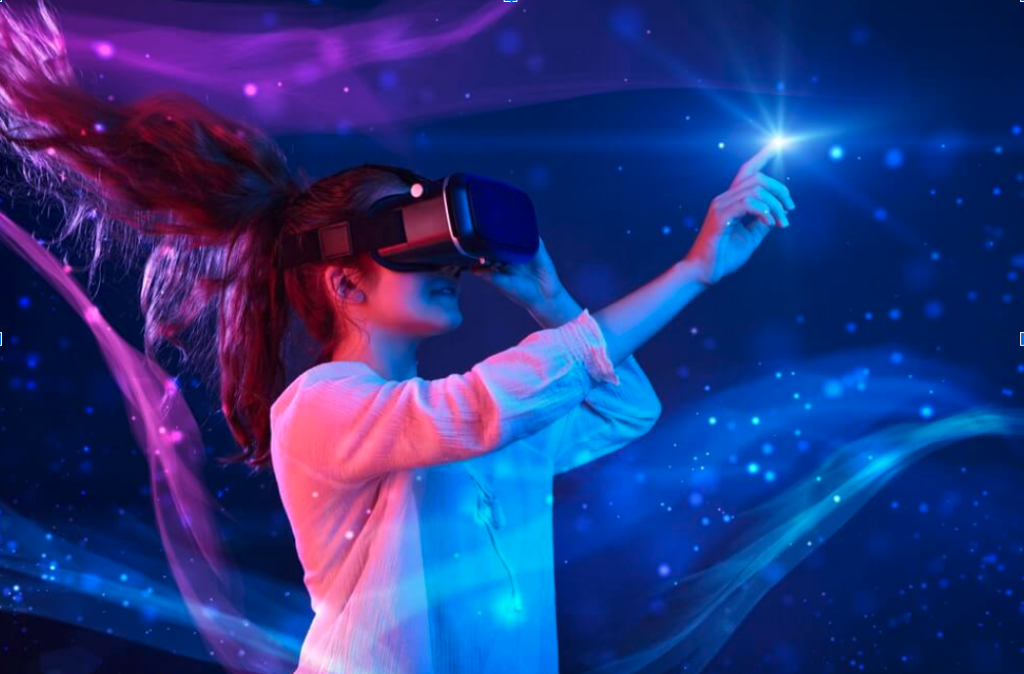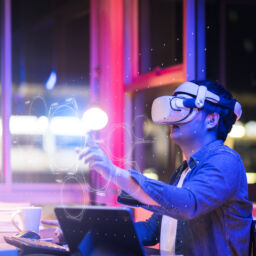
The potential of Virtual Reality as a medium and tool has continued to expand beyond gaming and entertainment, reaching into diverse industries and facilitating new experiences. From unprecedented applications in healthcare, education, and training to profound shifts in social interactions and the world of design, VR continues to redefine the boundaries of what’s possible. In this blog, we’ll look at some of the VR trends of 2023, and offer some predictions that might shape the next decade of virtual exploration.
Top Trends in 2023
Technology in gaming consistently breaks new ground. In 2023, VR gaming was no exception. The visuals in VR games have attained a level of sophistication that’s truly mesmerising, bolstering the sense of immersion. Game designers haven’t rested on their laurels; they keep exploring the nuances of the VR medium to astonishing effect. However, at Mersus, our attention was predominantly captured by VR’s increasing role in emulating real-world scenarios, such as in professional contexts or product visualisations. The corporate world is slowly waking up to the advantages VR can offer, particularly regarding training simulations.
The software aspect of VR has also seen remarkable advancements. Companies like Unity and Unreal have provided VR developers with increasingly sophisticated tools, simplifying the creation process. The rise of OpenXR is also helpful, enabling software compatibility across a variety of headsets.
Predictions for the Near Future
The hardware evolution isn’t slowing down. In the upcoming year, we’re anticipating several new headset releases, with Apple’s XR offering being particularly anticipated. The trajectory is clear: increasingly powerful capabilities will be packaged in sleeker, lighter designs. At Mersus, our focus has been on pioneering apps that favour hand tracking over traditional controllers, especially for mobile headsets. The market still has a limited number of entities producing VR training modules for untethered headsets utilising hand tracking. The question on our minds is: Will 2024 witness a more widespread transition to this format?
Immersive Experiences
As VR technology continues to advance, the line between the virtual and the real is becoming increasingly blurred. Future VR isn’t just about visuals; it aims to encompass all of our senses. This means that upcoming VR platforms are not only focusing on improving visual fidelity but are also diving into areas like haptic feedback, 3D audio, and even scent emulation. Such hyper-realistic simulations will do more than just entertain; they’ll challenge our very perceptions of reality. By engaging multiple senses, they can evoke stronger emotions, create more memorable experiences, and even be used in therapeutic settings. As we look ahead, the potential for VR to create entirely immersive worlds is both exciting and limitless.

Integration with AR
The convergence of Augmented Reality (AR) and VR is shaping up to be one of the most significant technological junctions in recent times. While VR offers a complete immersion in a digital world, AR overlays virtual elements onto our physical surroundings. The blending of these two realms promises a seamless continuum where users can transition smoothly between fully immersive and augmented experiences. This integration has the potential to revolutionise industries. For instance, in the realm of design and architecture, professionals could switch between altering a virtual model in VR and visualising those changes in a real-world context through AR. Similarly, in the entertainment sector, gamers could transition between playing in a fully immersive world and having game elements interact with their physical surroundings. The intertwining of AR and VR not only opens up new avenues for user experiences but also sets the stage for the development of hardware and software that cater to this hybrid reality.
AI Integrations with VR
Artificial Intelligence (AI) and VR together promise a dynamic synergy. One of the most promising uses of AI in VR is the customisation of user experiences through smart algorithms. This is most relevant to Mersus Technologies in the power AI can bring to tailoring a trainee on the AVATAR ACADEMY™ platform’s learning journey.
Moreover, AI’s capability to procedurally generate VR environments can lead to expansive, intricately detailed landscapes. Such environments could be constantly evolving, offering unpredictability and novelty to users. Additionally, integrating AI can infuse Non-Playable Characters (NPCs) with a semblance of autonomy, making them more nuanced and engaging for users.
The landscape of Virtual Reality is continuously evolving, presenting opportunities that refine our interaction with digital environments. As we stand at the threshold of further advancements in VR, it’s clear that the industry is charting a course towards even more immersive and nuanced experiences. Reflecting on the strides and innovations of recent years offers perspective on this progression. The future of VR promises enhanced realism and immersion, bridging the divide between the tangible and the virtual. As we move forward, the unfolding developments in Virtual Reality are sure to be both intriguing and impactful.

